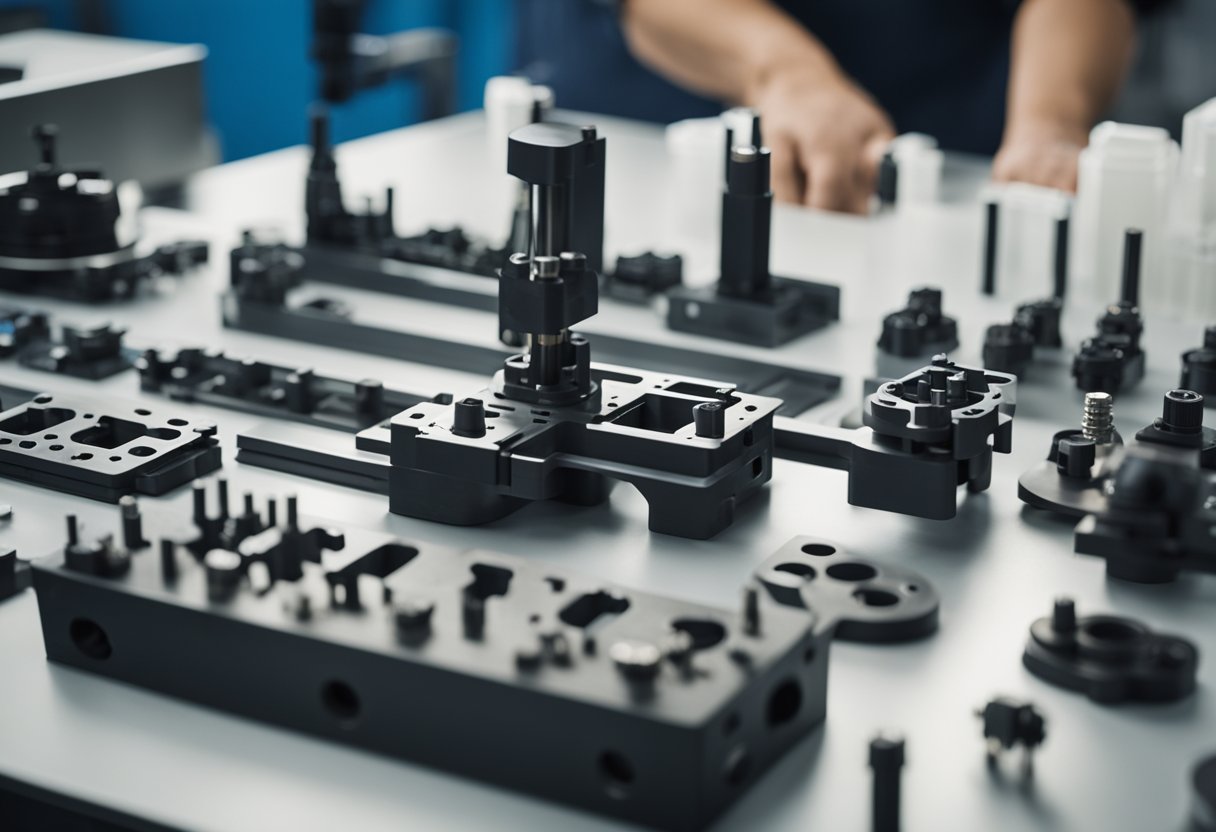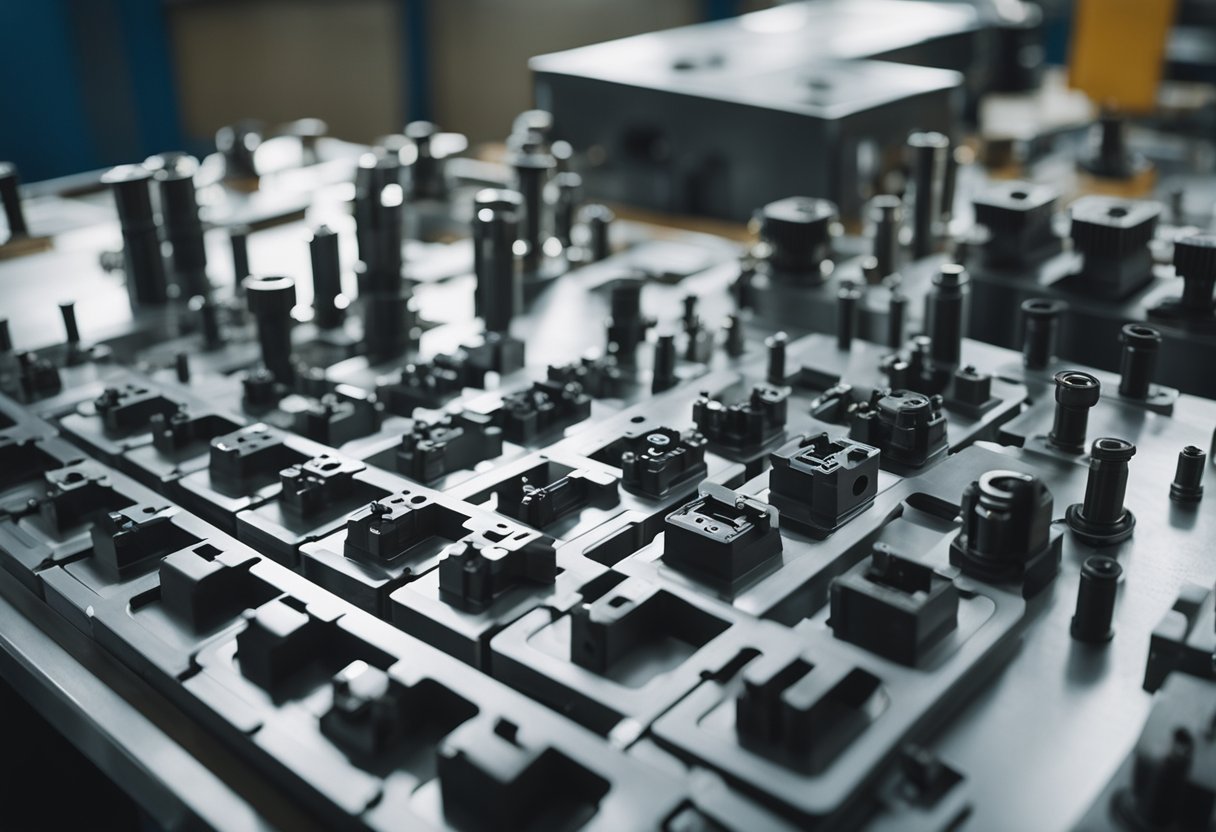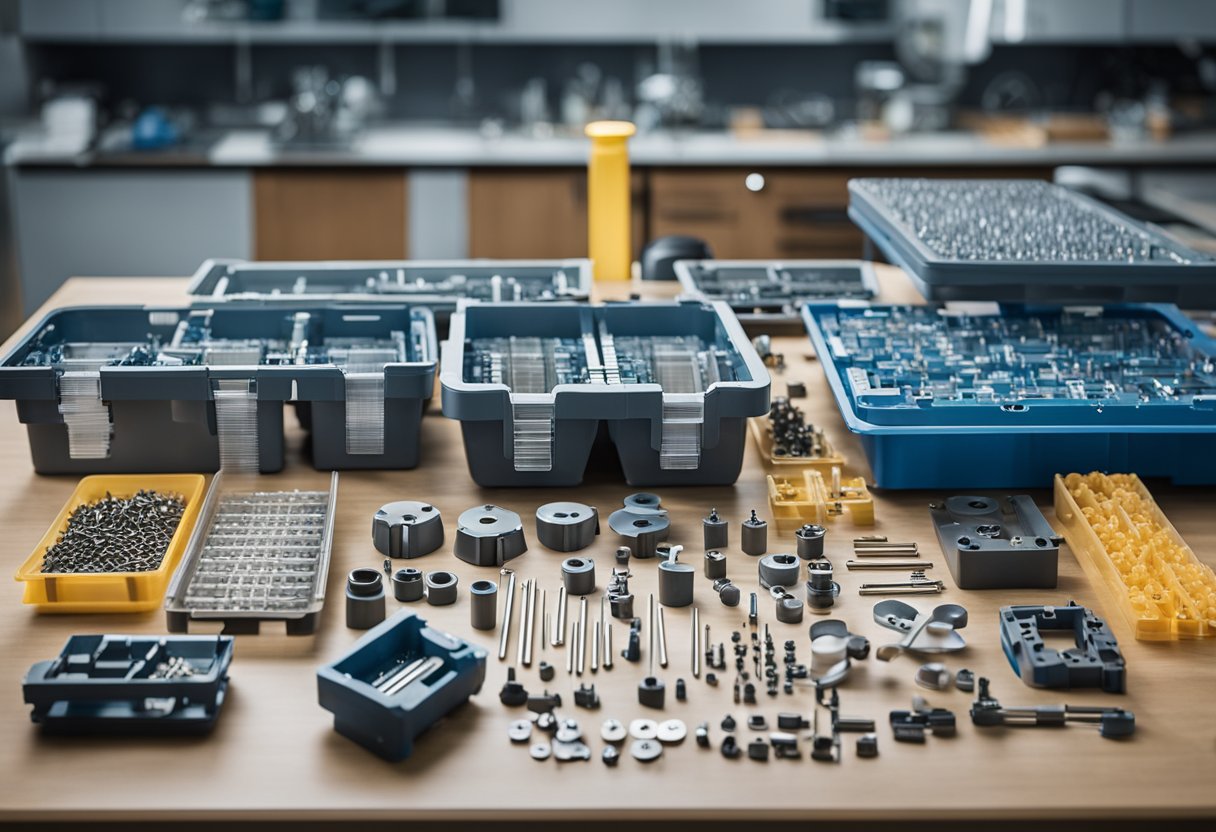If you're involved in the injection molding industry, then you're probably familiar with the importance of using the right components. Not only do they need to be high-quality and reliable, but they also need to be the right size and configuration for your specific application. This is why metric injection mold components are becoming increasingly popular.

Metric injection mold components are designed to meet the needs of mold makers and manufacturers who are looking for high-quality, precision components that are specifically designed for use in metric applications. These components are made to the highest standards of quality and are designed to fit seamlessly into your existing molds and tooling.
Whether you're looking for ejector pins, core pins, sleeve ejectors, or blade ejectors, there are a wide variety of metric injection mold components available on the market today. By choosing the right components for your specific application, you can ensure that your molds and tooling are working at peak efficiency, which can help to improve your production rates, reduce downtime, and increase your overall profitability.
Overview of Metric Injection Mold Components

If you are working with injection molding, you need to be familiar with the metric system. Metric injection mold components are widely used in the industry, and it is essential to understand their role and function.
Metric injection mold components are designed to work in unison to ensure that the mold opens, closes, and ejects the finished product efficiently and accurately. The components are made to strict tolerances to ensure that they fit together precisely.
Some of the most common metric injection mold components include:
- Metric ejector pins
- Metric guide pins
- Metric guide bushings
- Metric sprue bushings
- Metric locating rings
These components are used to ensure that the mold opens and closes accurately, that the product is ejected smoothly, and that the mold is aligned correctly.
When selecting metric injection mold components, it is important to consider factors such as material, size, and tolerance. You should also ensure that the components are compatible with your equipment and that they meet your specific requirements.
Overall, metric injection mold components are critical parts of the injection mold tool, and understanding their role and function is essential for anyone working in the industry.
Standard Metric Components

When it comes to injection molding, using standard metric components can save you time and money. These components are widely available and can be easily replaced or interchanged. In this section, we will discuss two of the most common standard metric components: ejector pins and core pins.
Ejector Pins
Ejector pins are used to push the part out of the mold after it has been formed. They are typically made of hardened steel and come in a variety of sizes and shapes. The most common shape is straight, but they can also be tapered or stepped. Ejector pins are measured by their diameter and length, and their metric sizes are based on the DIN standard.
Using standard metric ejector pins can save you time and money because they are readily available and can be easily replaced. When selecting ejector pins, it is important to choose the correct size and shape for your application. You should also consider the material of the pins, as some materials are better suited for certain applications.
Core Pins
Core pins are used to create internal features in the part, such as holes or threads. They are typically made of hardened steel and come in a variety of sizes and shapes. The most common shape is straight, but they can also be tapered or stepped. Core pins are measured by their diameter and length, and their metric sizes are based on the DIN standard.
Using standard metric core pins can save you time and money because they are readily available and can be easily replaced. When selecting core pins, it is important to choose the correct size and shape for your application. You should also consider the material of the pins, as some materials are better suited for certain applications.
Using standard metric components can be a cost-effective solution for injection molding. Ejector pins and core pins are two of the most common standard metric components, and they are widely available in a variety of sizes and shapes. By selecting the correct size, shape, and material for your application, you can ensure that your injection molding process runs smoothly and efficiently.
Custom Metric Components
If you need custom metric components for your injection molding process, you have a few options to consider. Two common types of custom metric components are custom mold bases and custom ejector sleeves.
Custom Mold Bases
Custom mold bases can be designed to fit your specific needs, including metric requirements. You can choose from a variety of materials, including steel, aluminum, and composite materials. The design can be tailored to fit your specific mold, and can include features such as water cooling channels, ejector pin holes, and alignment pins.
Custom Ejector Sleeves
Custom ejector sleeves are another type of metric component that can be tailored to your specific needs. Ejector sleeves are used to eject the molded part from the mold. They can be designed to fit your specific mold, and can include features such as water cooling channels, and ejector pin holes.
When designing custom metric components, it is important to work with a reputable supplier who has experience in the injection molding industry. Look for a supplier who offers a range of materials and services, and who can provide you with a detailed quote for your custom components.
Remember that the quality of your components can have a significant impact on the quality of your finished product. It is worth investing in high-quality components to ensure that your injection molding process runs smoothly and efficiently.
Material Selection for Components
When selecting materials for metric injection mold components, it is important to consider factors such as strength, durability, and cost-effectiveness. The two most commonly used materials for injection mold components are steels and aluminum alloys.
Steels
Steels are a popular choice for metric injection mold components due to their high strength and durability. They are resistant to wear and tear, which makes them ideal for use in high-volume production environments. Additionally, steels are relatively inexpensive, which makes them a cost-effective choice for many applications.
There are several types of steels that are commonly used in metric injection mold components, including:
- P20: This is a low-alloy steel that is commonly used for injection mold cavities and cores. It has good toughness and is easy to machine.
- H13: This is a hot-work steel that is commonly used for injection mold inserts and cores. It has excellent heat resistance and is highly wear-resistant.
- S7: This is a shock-resistant tool steel that is commonly used for injection mold cores and cavities. It has good toughness and is highly resistant to cracking.
Aluminum Alloys
Aluminum alloys are another popular choice for metric injection mold components. They are lightweight and have good thermal conductivity, which makes them ideal for use in applications where heat dissipation is important. Additionally, aluminum alloys are highly corrosion-resistant, which makes them a good choice for use in humid or corrosive environments.
There are several types of aluminum alloys that are commonly used in metric injection mold components, including:
- 7075: This is a high-strength aluminum alloy that is commonly used for injection mold cores and cavities. It has good fatigue resistance and is highly resistant to cracking.
- 6061: This is a general-purpose aluminum alloy that is commonly used for injection mold bases and plates. It has good weldability and is highly resistant to corrosion.
- 2024: This is a high-strength aluminum alloy that is commonly used for injection mold cores and cavities. It has good fatigue resistance and is highly resistant to cracking.
When selecting materials for metric injection mold components, it is important to consider factors such as strength, durability, and cost-effectiveness. Steels and aluminum alloys are both popular choices due to their strength, durability, and corrosion resistance. By selecting the right materials for your application, you can ensure that your injection mold components will perform reliably and efficiently.
Maintenance and Replacement
Maintaining and replacing metric injection mold components is essential to ensure the longevity and reliability of your mold. Here are some key things to keep in mind when it comes to maintenance and replacement.
Wear and Tear Indicators
Regular inspection of your mold components is necessary to identify any wear and tear. Look for signs of wear such as cracks, chips, and scratches on the mold surface. Any wear and tear on the mold surface can lead to defects in the final product. You can also check for wear and tear on the ejector pins, sprue bushings, and other components.
Another thing to keep in mind is the lubrication of the mold. Lack of lubrication can cause friction between the mold components, leading to wear and tear. Make sure to lubricate the mold components regularly to avoid any friction.
Replacement Procedures
When it comes to replacing metric injection mold components, it’s important to follow the manufacturer’s guidelines. Each component has its own specific replacement procedure, and it’s important to follow these procedures to ensure that the mold functions properly.
For example, when replacing a sprue bushing, make sure to remove any debris or residue from the sprue hole before installing the new bushing. This will ensure that the bushing fits properly and doesn’t get damaged during installation.
Similarly, when replacing ejector pins, make sure to use the correct size and length of the pin. Using the wrong size or length of the pin can cause damage to the mold, leading to defects in the final product.
Regular maintenance and replacement of metric injection mold components is essential to ensure the longevity and reliability of your mold. By following the manufacturer’s guidelines and keeping an eye out for wear and tear indicators, you can ensure that your mold functions properly and produces high-quality products.
Trends and Innovations in Mold Components
When it comes to metric injection mold components, there are several trends and innovations that are shaping the industry. Here are a few key areas to keep your eye on:
1. Material Innovations
One of the most exciting areas of innovation in mold components is the development of new materials. For example, there are now high-performance plastics that can withstand extreme temperatures and pressures, making them ideal for use in injection molding applications. Additionally, there are new materials that offer greater strength, durability, and resistance to wear and tear.
2. Automation and Digitalization
Another trend that is driving innovation in the mold component industry is the increasing use of automation and digitalization. This includes the use of robotics and other automated systems to streamline the injection molding process, as well as the use of digital design tools to create more precise and efficient molds.
3. Sustainability
Sustainability is also a key trend in the mold component industry. Many companies are now looking for ways to reduce waste and energy consumption, and are developing new materials and processes that are more environmentally friendly. This includes the use of recycled materials, as well as the development of biodegradable plastics that can be used in injection molding applications.
Overall, the mold component industry is evolving rapidly, with new innovations and trends emerging all the time. By staying up-to-date on these developments, you can ensure that you are using the latest and most effective components in your injection molding process.





